Cromer’s Stations
Use the links below to move around our Railway pages
Knapton Railway Station
History of the Line
Stations on the Coastal Line
| North Walsham | Mundesley on Sea | Trimingham | Sidestrand Halt | Overstrand |
| Cromer Links Halt | Cromer High |
| Cromer Beach | Roughton Road Halt |
Interesting Features on the Coastal Line
Cromer’s Stations
Our “What’s this?” screens
A Running in Board is a large sign showing the name of the railway station on the platform. The signs are intended to inform passengers of their location as their train pulls into the station, possibly while still moving at speed.
In normal circumstances a two-platform station has one running in board on each platform, situated near the end of the platform that the trains serving the platform will run in – hence ‘running in board’.
Did you know…
During the Second World War, running in boards in the United Kingdom were removed or obscured to prevent enemy spies or paratroopers from easily discovering their location
The halt is a lovely old fashioned term that conjures up images of rural quaintness that’s been lost over time, but that will live on in memories due to the unique part they played in the life of the communities they served.
Back in the day, a passenger station was defined as such by the fact of being able to issue tickets, and a goods station by virtue of being able to receive and handover merchandise/goods, etc to the public.
The halt, or station halt, was a station that had minimal facilities and where trains would usually only stop if the guard advised the driver of anyone travelling there or if there were passengers waiting on the (usually) single platform. They were usually unmanned which meant that tickets had to be bought on the train.
Those old enough may remember stations being “demoted to a halt” during the railways modernisation period, including our very own Paston & Knapton station in the 1950s.
Fare Evasion…
It’s worth remembering that a passenger on a train without a ticket could legitimately be there if they’d started their journey at a halt. This would not be the case where the passenger had boarded at a station.
If you have something to share…
If you have any photos or memories about our railway that you’d like to share, we’d love to hear from you. So if you’d like to;
- make a comment
- provide us with further information that we can include on our Railway pages
- or maybe suggest that we may have got something wrong
please click on the QuickLink below to go to our Contact page.
Cromer High

Cromer High Station
in the early 1900s
Built by the East Norfolk Railway (ENR), Cromer railway station (as it was initially called) was the first of four stations to be built in Cromer.
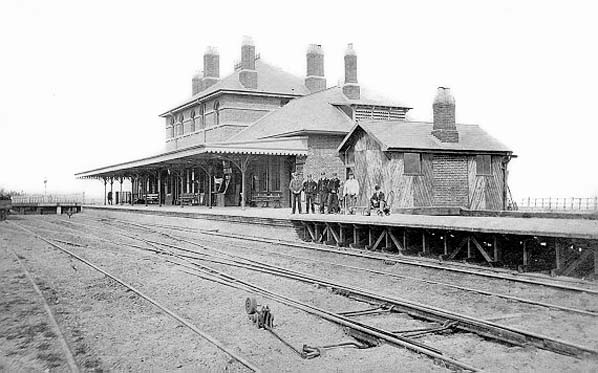
Cromer High station, 1880
initially it only had one platform
A steep escarpment, the Cromer Ridge, prevented the line running all the way into the town, so the station was built in open fields to the south, some distance from the town itself.


Cromer High station, from across the yard,
in b&w and colourised
It opened on 26th March 1877, serving as the terminus for the GER-managed London-Norwich-Cromer services.
In 1882, when the ENR was incorporated into the GER, the station and the line were all part of the deal.
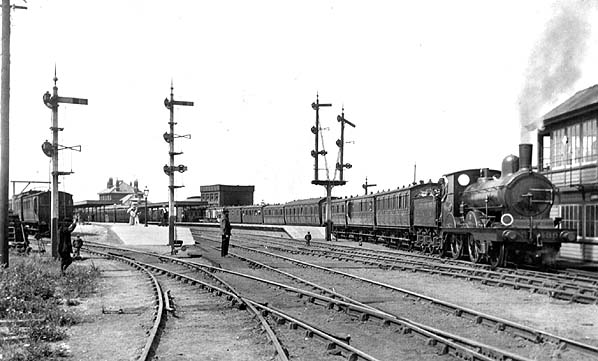
Cromer High station, 1908
now with 2nd platform
It was only when Cromer Beach was opened 10 years later that it started to be referred to unofficially as Cromer High, to distinguish between the two stations, but the ‘High‘ was not formally added until 27 September 1948.
Closure
In early 1954 it was announced that all trains would use Cromer Beach station and during the summer, the platform was lengthened and the track layout adjusted accordingly. On the day after completion, 19th September 1954, Cromer High closed its doors to passengers for the last time, although goods traffic didn’t cease until 1959.
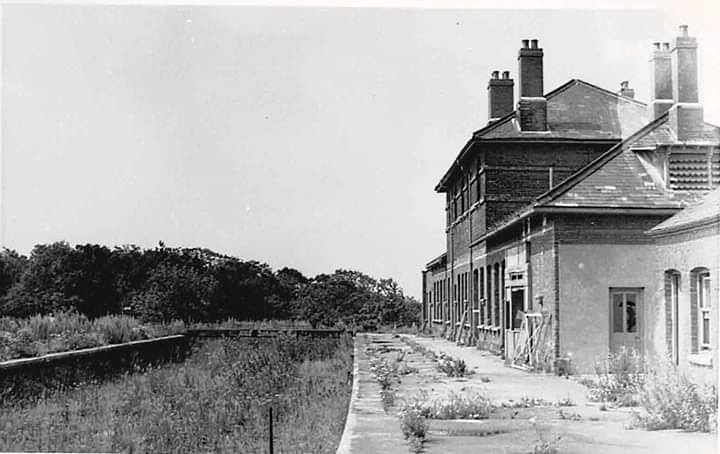
Cromer High station
after closure, 1960s
Did you know…
Despite the loss of passenger revenue, the bar attached to the station did not close until 1957
The station remained open as a freight terminus until 7 March 1960, but was then closed completely and the station demolished.
Cromer High was simply inconveniently situated high above and on the outskirts of the town and when the cuts came, it closed as a direct result of the rationalisation. Despite it having far better facilities than the more central Cromer Beach station down below, Cromer High was simply built in the wrong place.
Today…
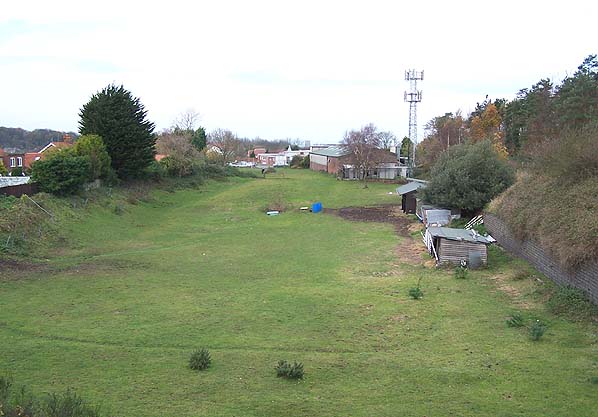
Looking Northwest towards the site of Cromer High, Autumn 2005
Part of the station site has been redeveloped for housing, but much remains undeveloped, although derelict and overgrown.
Cromer Beach
Previous station | next station
Cromer Links Halt | End of the line
The station opened as Cromer Beach on 16th June 1887.
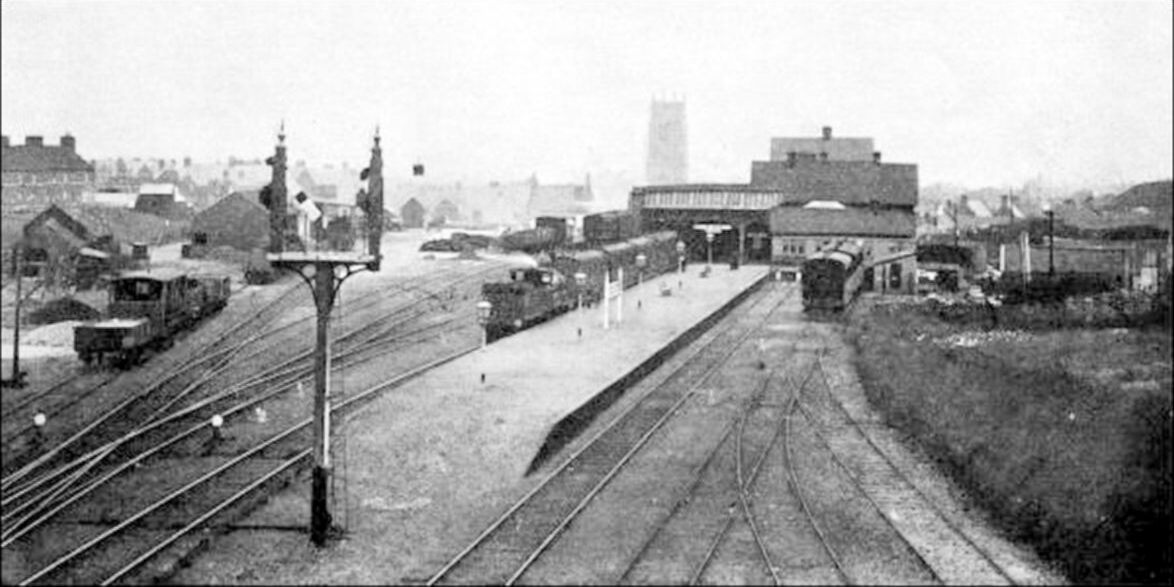
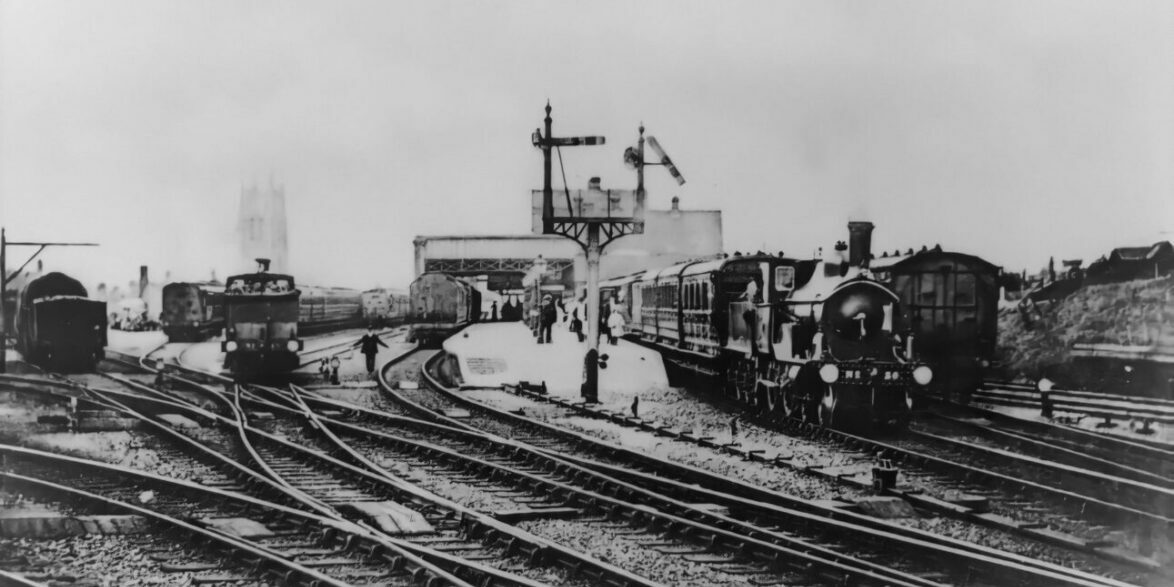
Cromer Beach station | 1890s
It began life with a huge advantage over the GER station at Cromer High, because the Midland & Great Northern Joint Railway (M&GNJR) line approached Cromer from the west, following the coastal clifftops, so it avoided the steep escarpment which had prevented the earlier GER line from Norwich running all the way into the town. Consequently, it became possible to build a far more conveniently located station, near to the town centre and the beach.
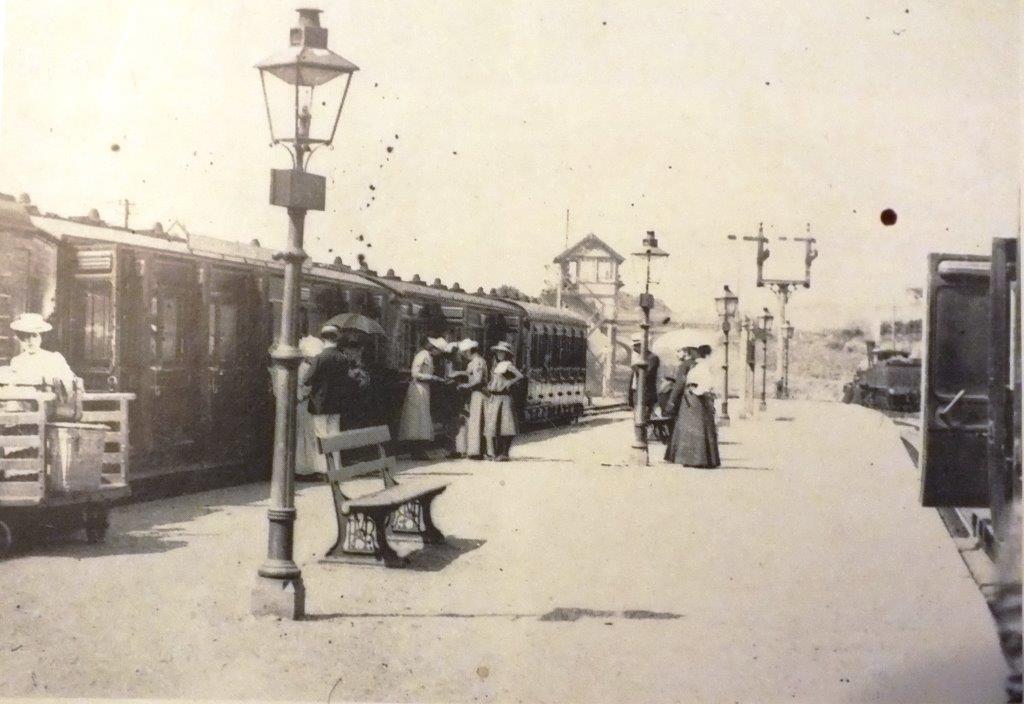
Cromer Beach station / 1906
To cater to the heavy leisure traffic at the end of the 19th century, Cromer Beach had a large station building in a half-timbered style, and a large goods yard.
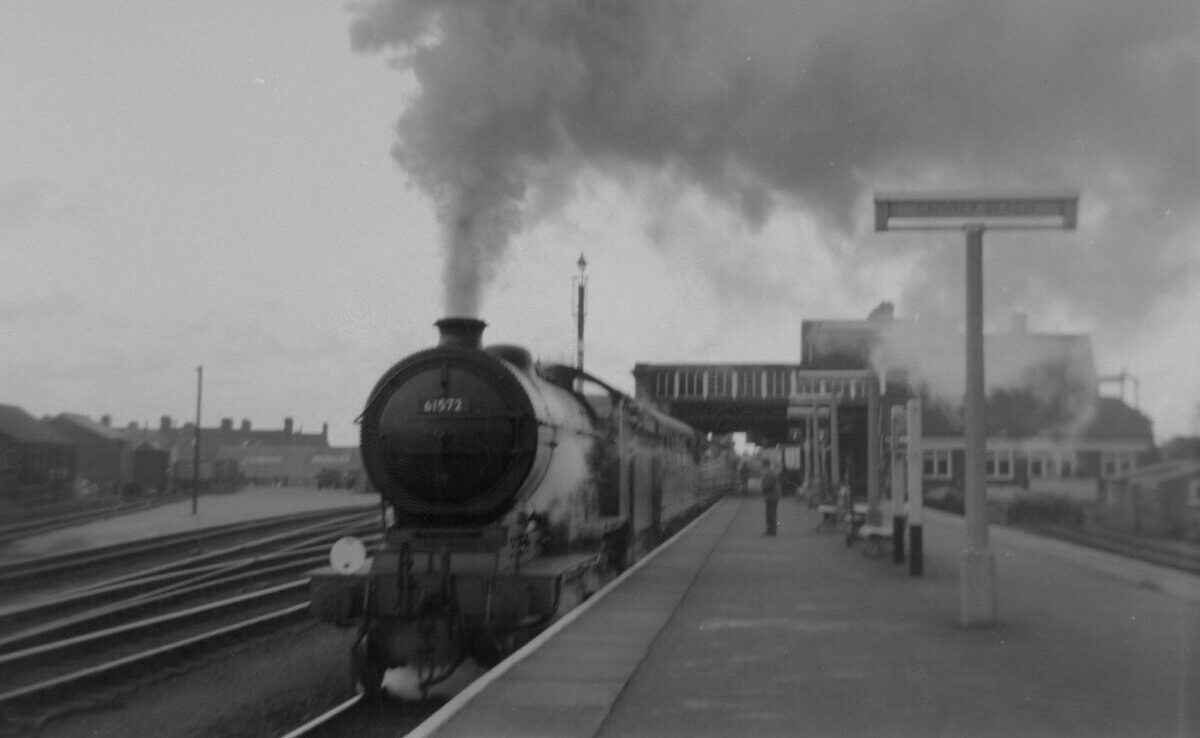
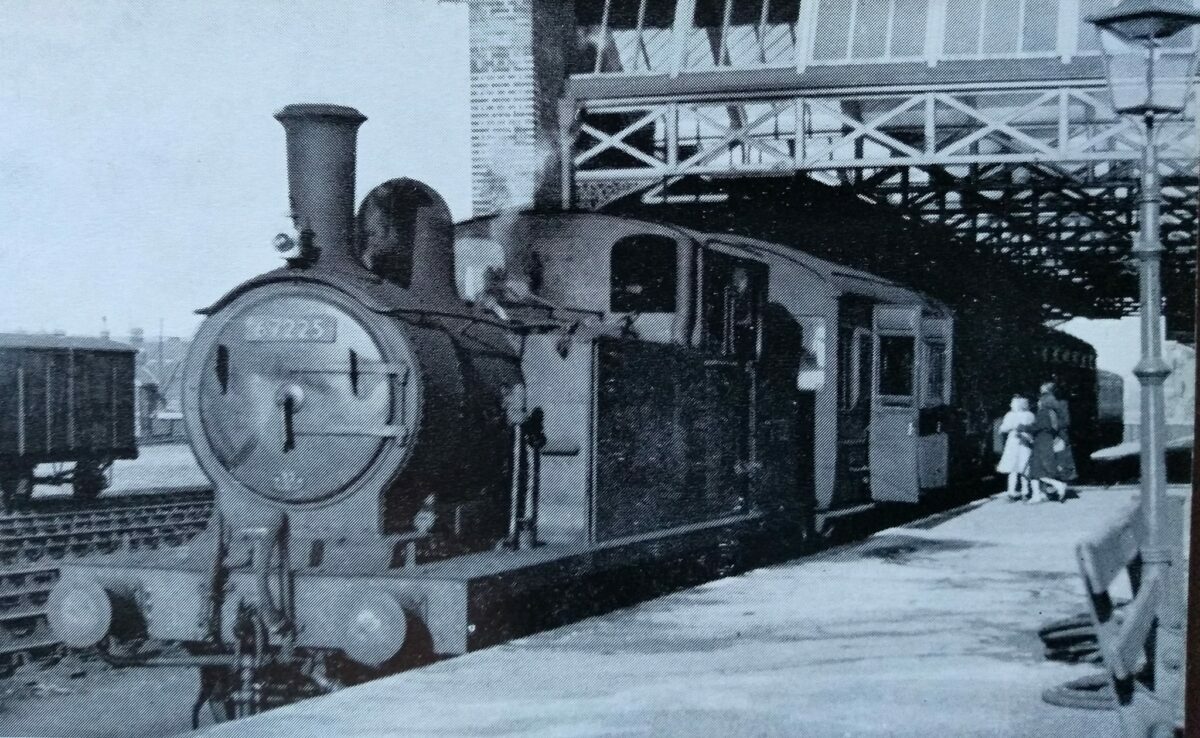
Cromer Beach station in 1952
The station originally included a bar but this was closed in 1966. Following the introduction of conductor-guard working, the ticket facilities were no longer needed and the building fell into disuse.
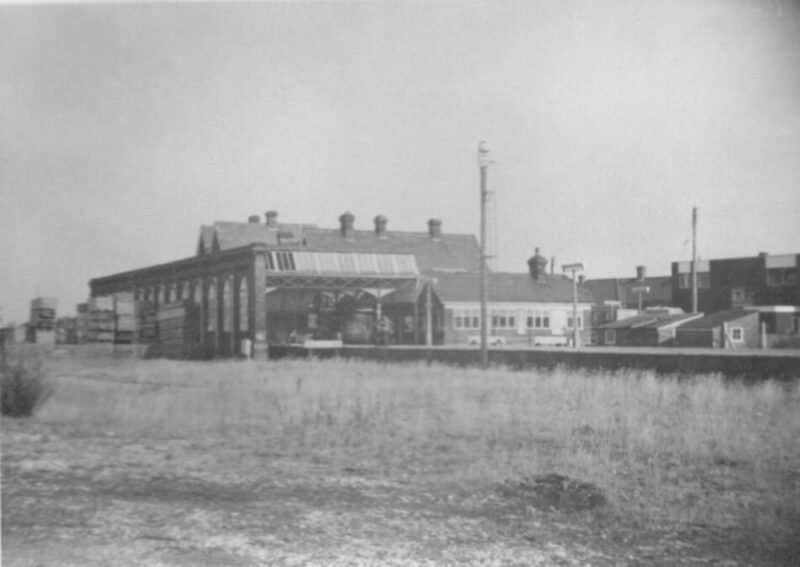
Cromer Beach station in 1970
In 1969, as part of the Beeching Report’s rationalisation of goods traffic, goods and coal were no longer handled at Cromer Beach, which was renamed simply Cromer and all the track except the main lines were removed.
Today…
Safeways supermarket, which was built on the site of the engine sheds and goods yard, opened in 1992 and taken over by Morrisons in 2008.
The station building was renovated and reopened as the Bouncers Nightclub in 1998.
Leaving Cromer Beach, a short section of the original line remains in use as part of the Bittern Line.
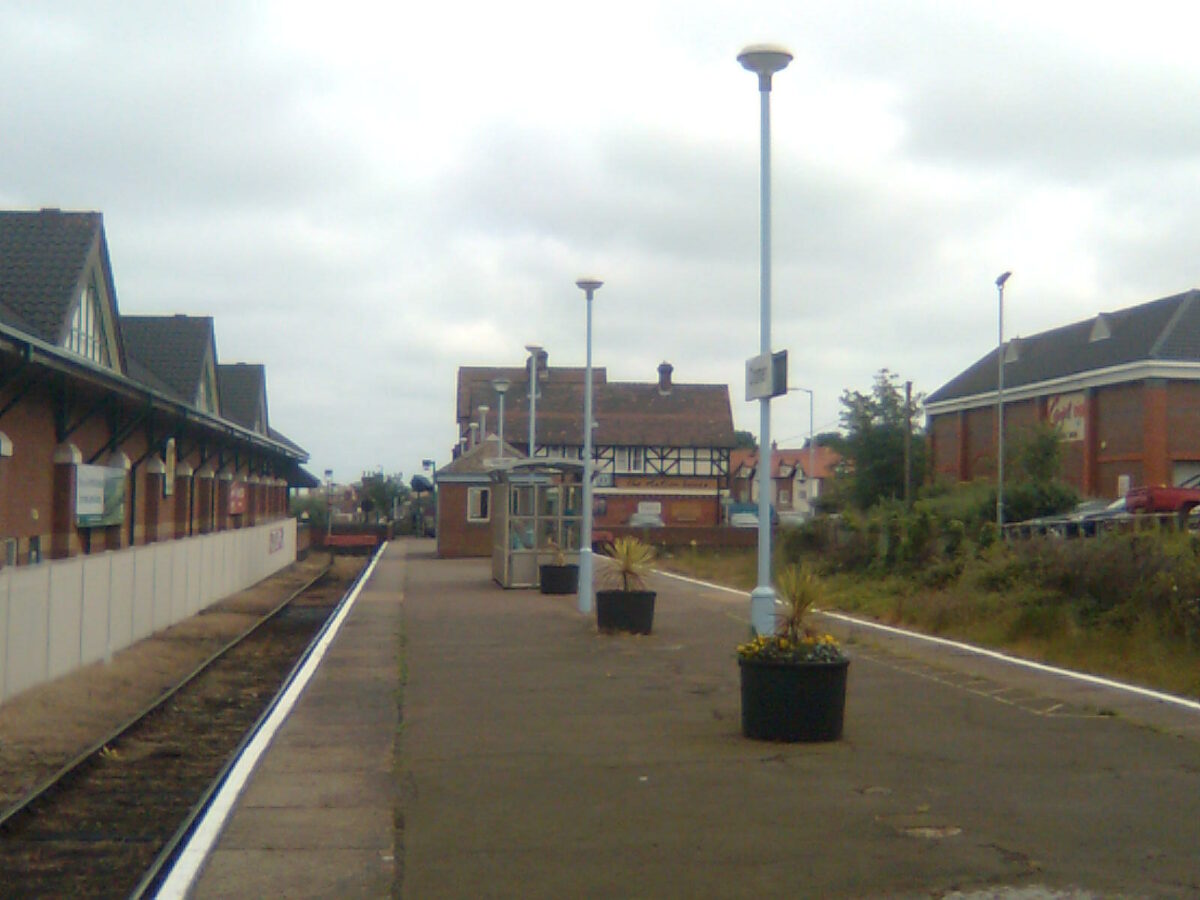
Cromer station in 2013
Looking along the platform of Cromer Station with Morrisons supermarket on the north side of the station
Cromer is one of only two former M&GNJR stations to remain operational on Network Rail, the other being the neighbouring West Runton.

Cromer station | 2017
looking up the platform towards the signal box
Cromer Beach’s signal box was built in 1920 for the Midland and Great Northern Joint Railway.
It was designed by William Marriott, the company engineer, who took a particular interest in concrete as a building material and was built from concrete block and gault brick with a Welsh slate roof. Cromer signal box is the last box of this type still working out of an original 90, and the largest surviving of Marriott’s concrete structures.
It was refitted with the present 35 lever in 1954 frame when Cromer High station was closed in the same year and all the traffic transferred to Cromer Beach.
Cromer Links Halt
previous station | next station
Overstrand | Cromer Beach
After the Great War, it became fashionable for the wealthier to travel by car. They took full advantage of their new found freedom to seek out new holiday destinations, thereby deserting established resorts such as Cromer which as a consequence saw its visitor levels drop.
At the same time, Golf courses experienced a huge surge in popularity and on 9th July 1923, Cromer Links Halt railway station was opened as part of a blatant attempt to encourage the golfers to use the line, being deliberately placed to serve the nearby Royal Cromer Golf Club.
Costing £170 to build, the halt was approached from the Northrepps Road via steps which were located in a wood and lead up the embankment on which the railway ran, to the station.
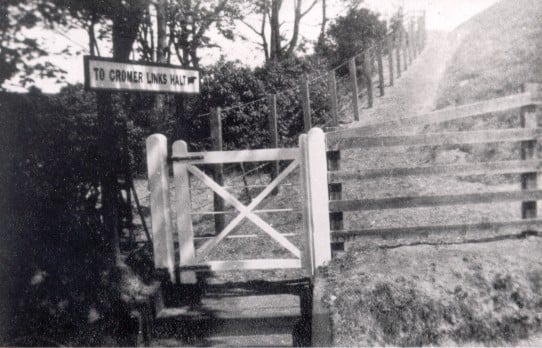
Cromer Links Halt | 1923
the sign pointing up a slope to the single platform
Interestingly, there is no mention of the railway halt in the historical document on the golf club’s website.
The station facilities were very basic, consisting of a single wooden platform that was constructed of railway sleepers and supported by wooden trestles, two wooden benches and a Running in Board together with the obligatory oil lamps.
No shelter was provided for passengers.
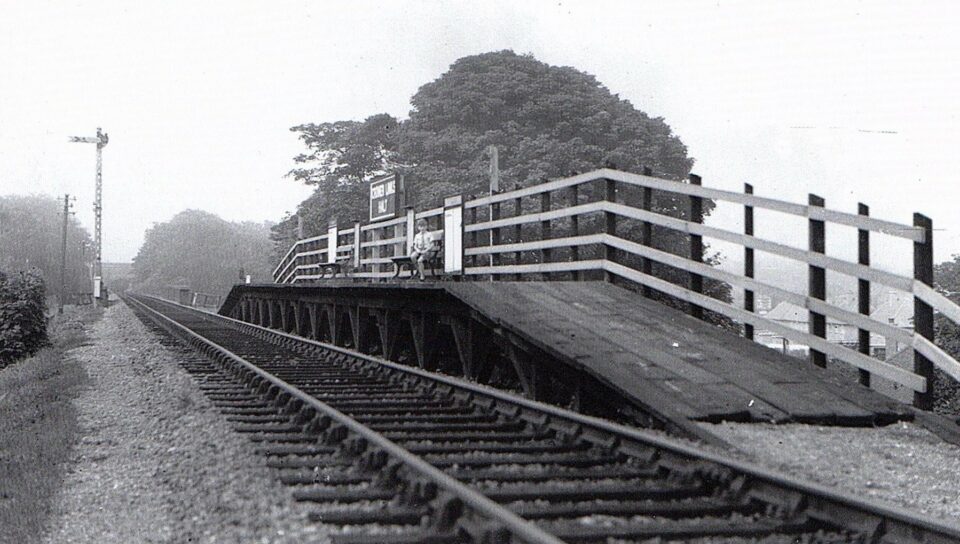
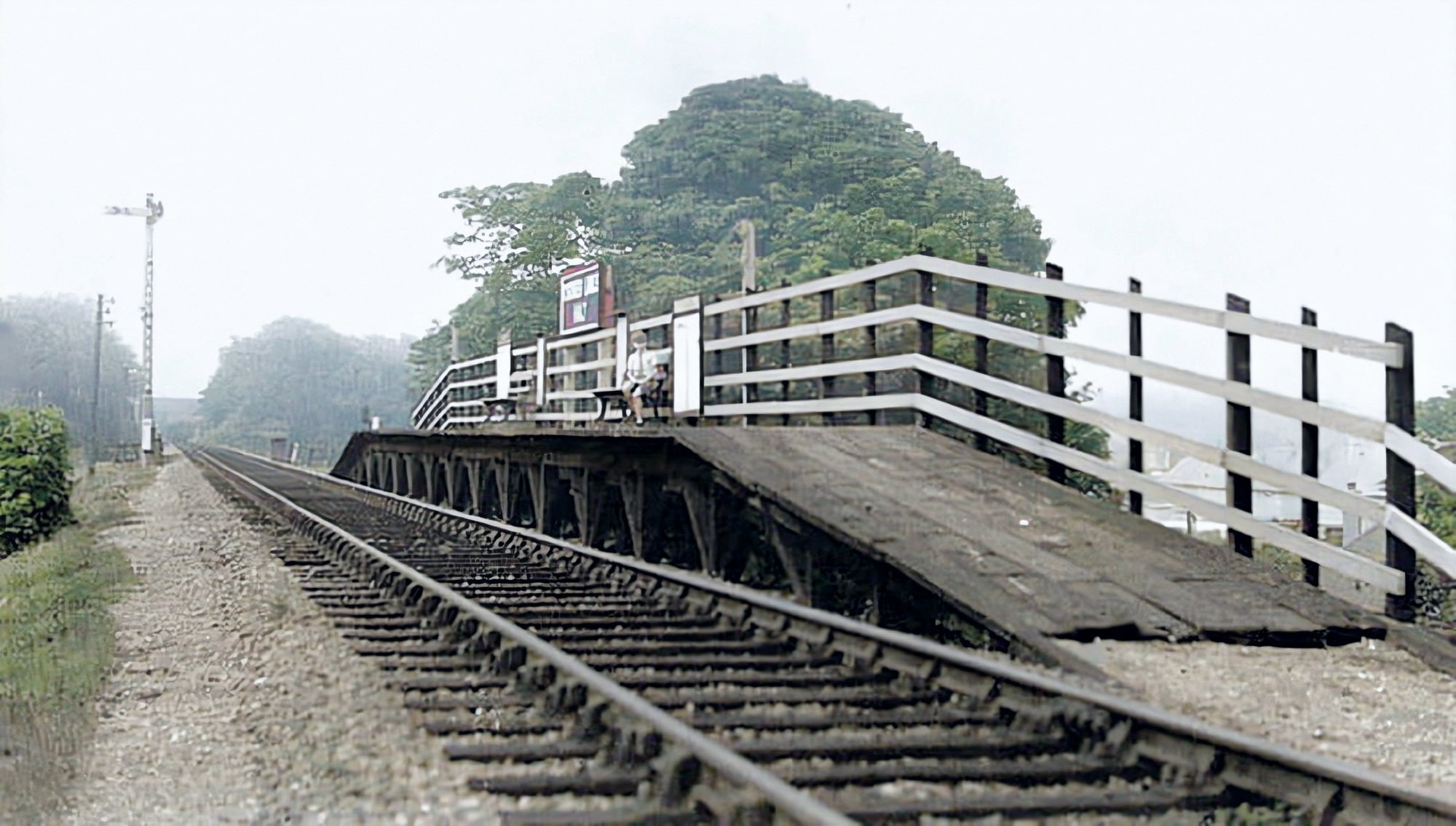
Cromer Links Halt looking towards Cromer Tunnel just before closure, in b&w and colourised
It closed thirty years later on 7th April 1953, the same year that severe gales wrecked Cromer’s pier and demolished the pavilion.
Today…
Due to its wooden construction, virtually no trace of Cromer Links Halt has survived other than the gate to the approach path up the embankment, the rotting remains of which are entangled in the undergrowth at the site of the station.
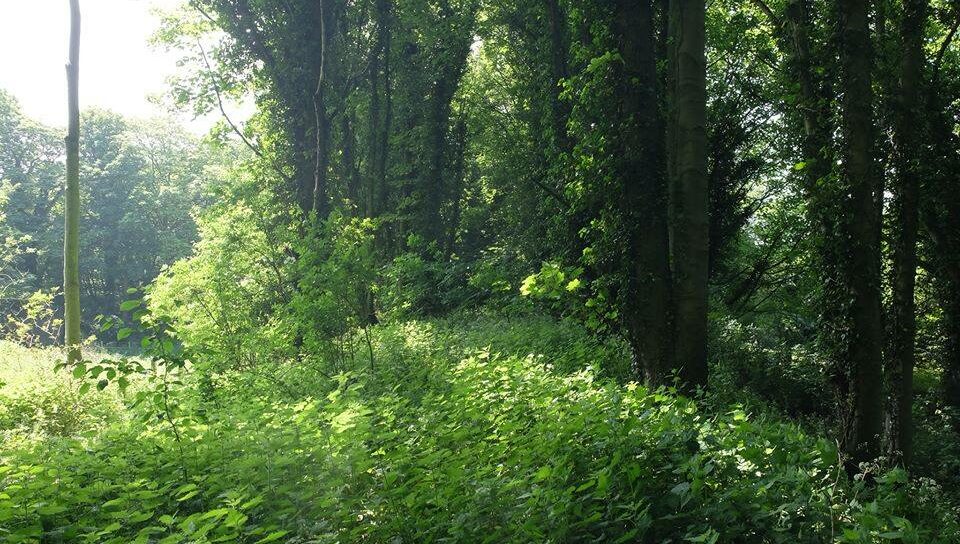
The site of Cromer Links Halt as it looks today
Roughton Road Halt
Roughton Road Halt railway station is a modern halt station on the Bittern Line, situated between Gunton and Cromer stations, that was opened by British Rail on 20th May 1985. Being a halt, it is unstaffed and consists of a single platform.
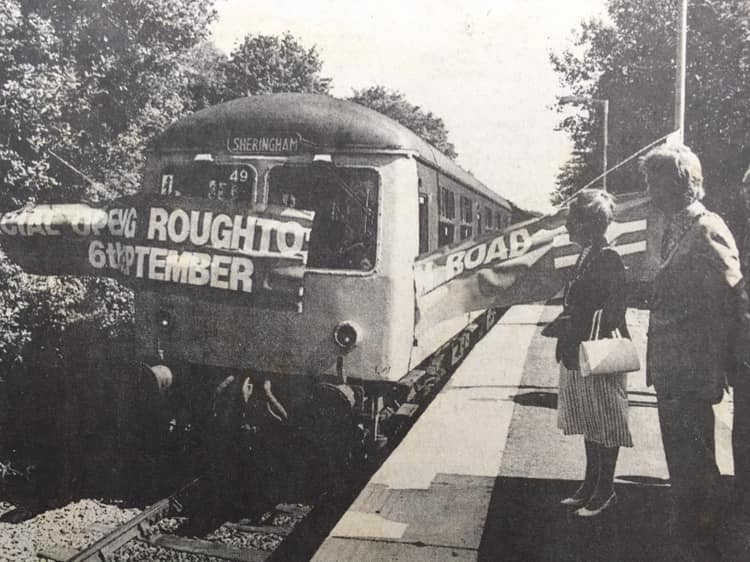
Opening Day for Roughton Road Halt, 1985
It was built to cater for the increasing numbers of Norwich commuters moving to Cromer and was built on the outskirt of the town. This is obviously in stark contrast to the fall in passenger numbers that followed
Cromer’s decline in popularity as a holiday destination after WW2, which led to the closure of the coastal line between Cromer and Mundesley in April 1953.
Roughton Road Halt
Although it’s several miles north of the village of Roughton, it takes its name from the street it’s on, which is approximately half a mile from the site of the now closed Cromer High station (the former terminus of the GER) and is actually on the site of the former junction between the GER and the NSJR at the entrance to the disused Cromer Tunnel.
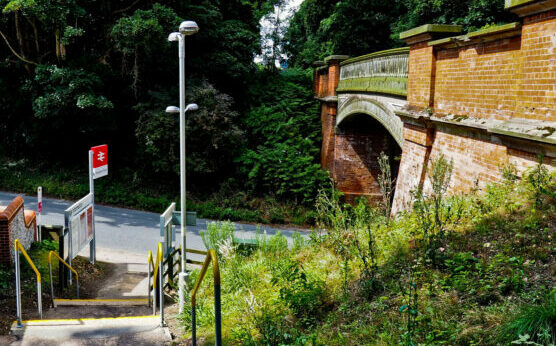
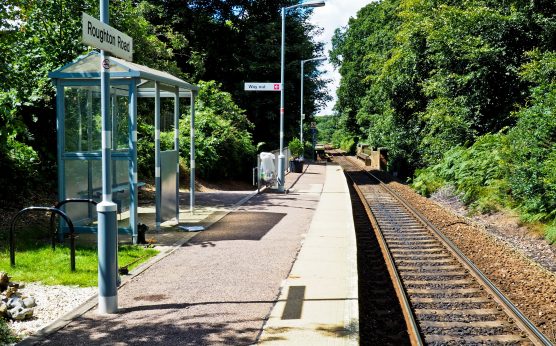
Steps up to the single platform


Today…
Today it is managed by Greater Anglia Railway, which also operates all the passenger trains that call.
As of December 2016, the typical off-peak service at Roughton Road is one train every two hours in each direction between Norwich and Sheringham. In peak hours, service frequency is increased to one train per hour.
Roughton Road Halt
Below are the recorded annual footfall figures.
| Year | Entry / Exit |
|---|---|
| 2018 | 6484 |
| 2017 | 6082 |
| 2016 | 2281 |
| 2015 | 2832 |
| 2014 | 3120 |
| 2013 | 3735 |
| 2012 | 4126 |
| 2011 | 3687 |
| 2010 | 4249 |
| 2009 | 3984 |
| 2008 | 3590 |
| 2007 | 3575 |
